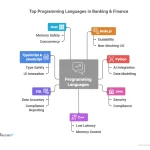
Woman are calculating travel expenses. Asia, Thailand
An effective budget may not always be easy, but it’s an invaluable way to track how your money is being spent and where your expenses lie. Review your take-home pay, checking account balances, credit card statements and store receipts before starting to create your plan.
Reconcile all your monthly expenses, from fixed costs such as utilities and rent or mortgage to variable ones such as groceries, gas and entertainment. Compare needs vs wants in order to identify areas in which savings could be found.
Determine Your Income
As part of your budget-making process, the first step should be calculating how much income you make each month. Your income includes all sources that provide regular cashflow such as paychecks from employment and payments from clients if you freelance/gig work as well as dividends/interest income.
Utilize your last three paystubs to determine your average monthly gross and net incomes, with non-salaried workers also accounting for self-employment tax and out-of-pocket health insurance premium costs.
At this stage, it’s also wise to review other sources of income you receive regularly such as child support, disability payments and investment earnings. If expenses exceed income, whistle the Kingston Trio’s “Bills, Bills, Bills” song and make some tough choices – the aim is to balance both long-term goals as well as short-term ones when considering your spending priorities.
Track Your Expenses
Step one of taking control of your finances begins by keeping a record of everything you spend each month, such as necessary expenses, unnecessary ones and where there may be room for savings. Compare that against your net income. Be mindful not only to count what you spend each month but also consider average expenses such as utilities or groceries when doing your calculations.
As with anything worthwhile, expenses need to be tracked regularly and should not just be done when convenient or thought necessary. You can track them by writing down all expenses you spend money on or using spreadsheets or apps on your phone/computer which record each expense itemized by bank/credit card statements containing this data. It is also essential that tracking be done consistently rather than only occasionally when needed.
Your expenses could be divided into three distinct categories: fixed, periodic and variable expenses. Fixed expenses tend to be stable and predictable while periodic ones appear regularly, such as utility bills or debt payments. Variable expenses vary between months; this could include groceries or entertainment costs.
Set Goals
Tracking your spending can be eye-opening. While certain expenses (rent/mortgage payments, food and utilities) may be necessary (like rent/mortgage payments and utility costs), other costs might not. A budget can help distinguish needs and wants with specific goals for both categories.
Your first step should be calculating your monthly income, which typically refers to your take-home pay or net pay minus deductions for taxes and employer-provided benefits such as health insurance or retirement plans. You can easily assess this by reviewing your check register, bank statements or credit card bills where applicable.
Review both your variable and fixed expenses to identify areas for potential savings. It might help to examine if some expenses (like dining out less or cancelling a monthly music subscription) can be completely eliminated, or whether there might be cheaper services or products available that might save money in their place.
Create a Budget
Even though creating a budget may seem tedious and time consuming, doing it will put you back on the right path towards meeting your financial goals. From paying off debt or saving for a home to finding space in your spending plan for something fun – identifying where your spending goes begins by tracking what expenses exist within it as a place where adjustments could be made and where there may be room for savings.
Step two in the process is dividing expenses between needs and wants. This is the quickest and most straightforward way of understanding your spending habits and finding areas where you could reduce costs without feeling pained by making cuts. There are various apps that can automate this task for you; alternatively you could manually track receipts by keeping an expenses spreadsheet updated with receipts from purchases made over time.
Savvy budgeters recognize that unexpected expenses will arise at times. Therefore, it’s essential to set aside an emergency fund or put away a fixed sum each month in your savings account in case any unforeseen costs arise.






